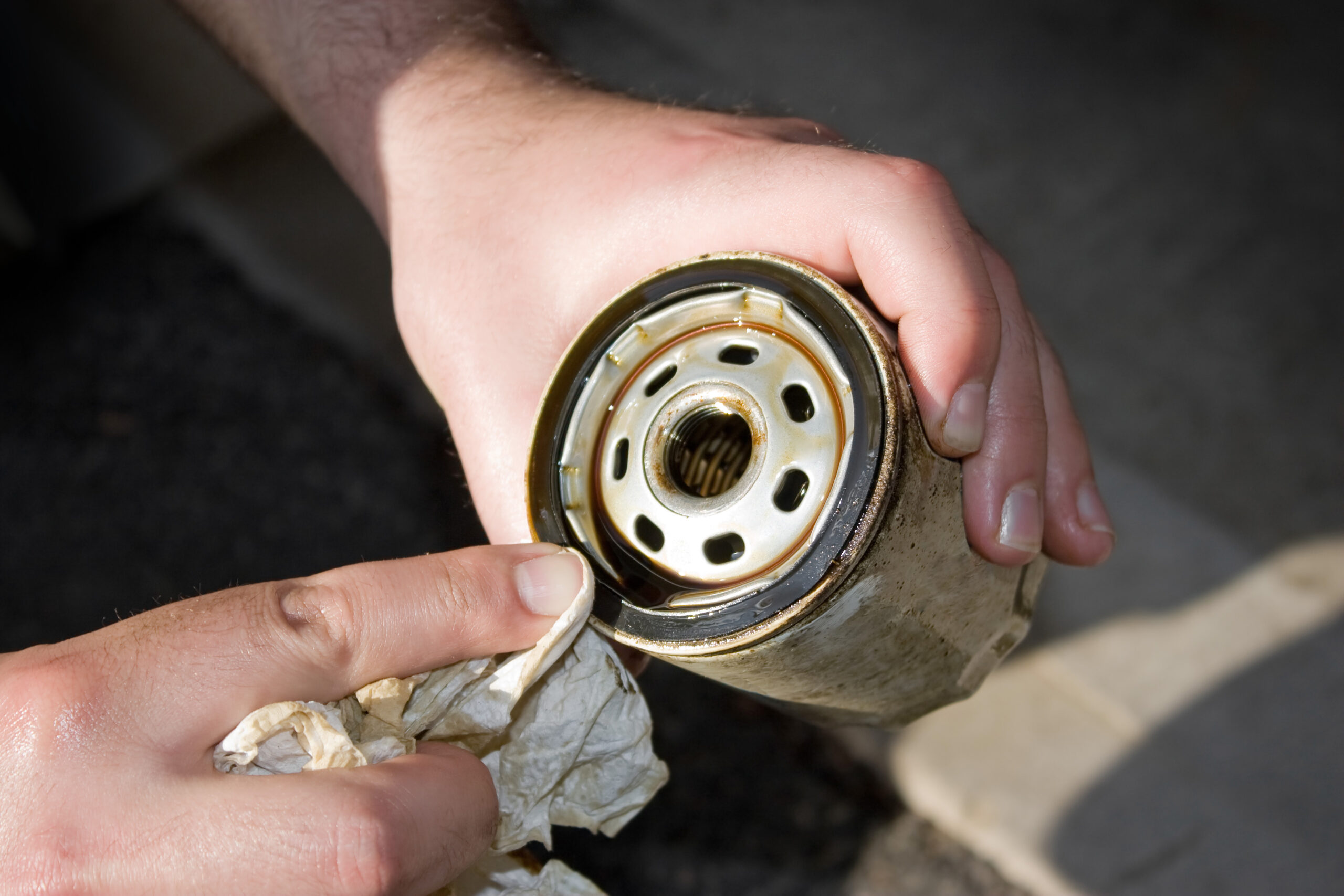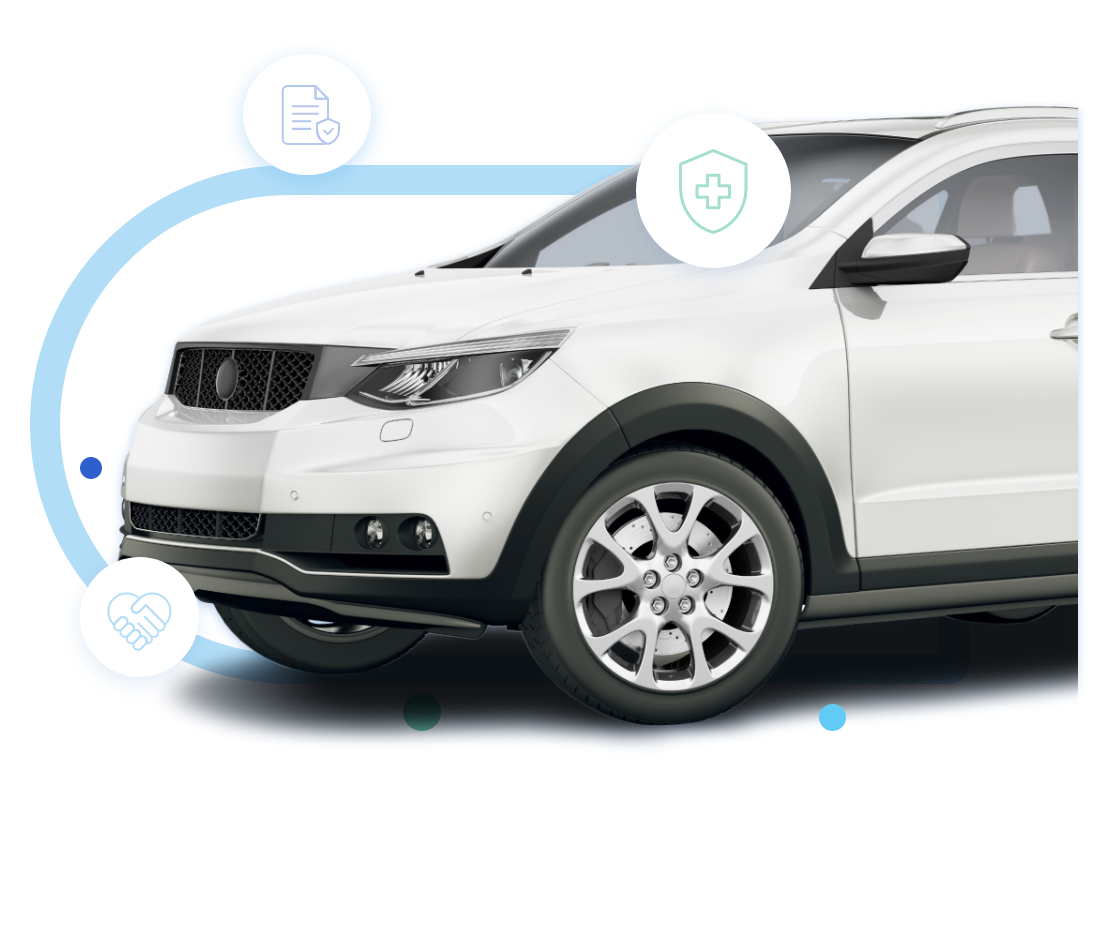
Teen drivers provide an additional, higher risk for insurance companies, which is why teen auto insurance is so expensive. You can’t change those details, but you can control the car your teen drives. Handing over the keys to your brand-new BMW is only going to make the situation worse. Whether your teen will be driving your car or getting a car of their own, you should consider a used model. New cars are more expensive to fix. In an attempt to prepare for the risk, you’ll see an even higher insurance rate for a teen who will be driving a new car.
In addition to considering a used car, it’s important to consider the safety ratings on the car — for the protection of your teenager and the sake of your wallet. Insurance companies aren’t just worried about the risk of damage to the car, but also about the risk of damage to the people inside it. Investing in a car with a good safety rating can help you lower your insurance costs.
See the rest of the teen driver guide.
Jump To:

If you need to purchase a car for your teen, determine how much money you’re willing to spend. Do you want to purchase a new car or a used car, for example? The costs of new cars tend to run quite a bit higher than a used car, and if you don’t have savings for a car, you may need to look into financing options.
What amount can you spare each month for a car loan? Start by determining the price range you can comfortably afford. Consider how much you earn, the amount of savings you have and how much you already spend each month. If you can afford the full cost of the vehicle upfront, you may be able to ask for a discount and save a large amount on interest.

Next, you’ll have to consider whether you want to purchase a new or used vehicle. For your teen driver, you may want to consider purchasing a used vehicle. Though they may not come with all the updated features of the newest model, used vehicles can still make reliable cars for teens. Used cars usually cost less and insurance rates are typically lower, which means a used vehicle may offer a better value than a new vehicle. Depending on the model, a used car may have as many safety features as a new car.
Depending on whether you or your teen are paying for the car, a used car may be the only option that fits within the budget. Of course, you’ll want to exercise caution when purchasing a used vehicle. Consider taking the car to an independent mechanic before purchasing.

When you find a vehicle you and your teen like, you may want to check the safety ratings from the Insurance Institute for Highway Safety or the National Highway Traffic Safety Administration (NHTSA).
You can easily search for a vehicle based on its year, make and model to determine whether it’s safe enough for your child. You can find this information on the window sticker, dealership paperwork, an insurance card or in the owner’s manual. If you search for your car through NHTSA, for example, the car will be rated on a 5-star scale.

You can read reviews about a vehicle online to find out what other drivers like and dislike about the car. Reviews can be more reliable than the information you get from a biased source like a salesperson.
Obtain the vehicle history report on the car before you go through with the purchase. This is a detailed report that uses the car’s VIN number. In this report, you’ll find out the critical information about the vehicle, such as its maintenance records, how many owners the vehicle has had, any accidents the car has been involved in, title information, liens, flood damage and airbag deployments.

Every vehicle comes with two fuel economy figures — city and highway. City miles per gallon refers to urban driving in which you start a car in the morning and drive it in stop-and-go traffic. Highway miles per gallon refers to a mix of interstate highway driving and rural driving in a warmed-up vehicle, which is typical of a longer trip in traffic that is free-flowing. A car with a good fuel economy will save you and your teen money on gas.

Before you buy a car, check what insurance rates are like. Even if teens tend to be expensive to insure, finding the right car can help you get a good insurance rate. Insurance rates can be influenced by the retail price of the vehicle, the vehicle’s safety rating, the cost of parts and your location.

While research can be incredibly useful, nothing can give you a better idea of whether a car is a good choice for your teen than a test drive. A car that sounds good on paper may not handle as well as expected. For new drivers, test driving several models is particularly important, as this allows your teen to learn how performance varies from car to car.
If you plan on buying a car from a dealership, select a time that is convenient for you when the dealership is open. Keep in mind that many people visit dealerships on weekends, which means a salesperson may have less time for you. Consider test driving a car for roughly half an hour so you can determine how it handles in different environments and on different types of roads.
The best car for teens depends on your priorities like safety, affordability and gas mileage. Based on safety, longevity and insurance affordability, the Toyota Camry is our top pick for teen drivers. Models from Toyota, Hyundai, Subaru, Honda, Kia and Ford tend to be safe, affordable and durable. We recommend staying away from sports cars or vehicles with powerful engines, along with SUVs and large pickup trucks.
As a parent, each new milestone your child reaches can feel bittersweet. You know an overarching goal of parenthood is to help your kids become independent, yet a part of you wishes they could stay little forever. The teenage years are a special time for kids as they begin to make the transition to adulthood. There may be no milestone quite as exciting for a teen as the day they receive their driver’s license. After practicing with an adult in the vehicle and probably bumping over a few traffic cones, they can now drive on their own.
When your teen receives his or her license, the next question becomes: “What vehicle will my teen drive?” The traditional philosophy was to buy or pass along a heavily used car to your teen, with the idea that the inevitable dings and scrapes likely to come with inexperienced driving won’t matter so much on an old “beater car.”
As Alex Epstein, the director of transportation safety for the National Safety Council, points out, beaters are no longer the best option for teens, or any new drivers, for that matter. With advancements in technology, there are now much safer options for teens to drive. While safety tends to be a major priority for parents when helping find a vehicle for their teen, it isn’t the only priority. Cost is also a concern — not just how much the car costs initially, but also how much it will cost to insure.
When your teen receives his or her license, the next question becomes: “What vehicle will my teen drive?” The traditional philosophy was to buy or pass along a heavily used car to your teen, with the idea that the inevitable dings and scrapes likely to come with inexperienced driving won’t matter so much on an old “beater car.”
Whether you plan to purchase or lease a vehicle for your teen, or they will pay for their new ride themselves, you want your teen driving a car, SUV, truck or minivan that makes insurance affordable and that you can depend on to keep them safe and to last.
In this post, we’ll discuss some of the considerations parents should think through when your teen is ready to drive, such as how to talk to them about safe driving and whether you should buy or lease their car or let them make the purchase themselves. Then, we’ll dive into our list of the safest vehicles, lowest insurance premium vehicles and vehicles that are most likely to last for your teen. We’ll conclude with our top pick for an excellent first car for your teen based on all those categories.
Though we’ll be focusing on vehicles in this post, it’s essential to note no car is guaranteed to keep your teen safe. It’s important for teens to understand how dangerous driving can be, and that they must remain committed to safe driving practices.
Parents all have one thing in common with their teens: We were once that age, too. Though it may feel like another lifetime, most of us can recall times when we threw caution to the wind or felt invincible behind the wheel. It can feel scary to hand over the keys to your teenager and let them drive on their own, knowing they may be careless or make youthful mistakes.
You can help mitigate your fears and keep your teen safe by talking to them about safe driving. Hopefully, they received some training and learned about what constitutes safe and unsafe driving in a driver’s education program. Even if they did, hearing about it from Mom or Dad can still be helpful. Try not to approach a conversation about safe driving with the attitude that you don’t trust your teen to be responsible, and don’t feel like you need to “scare them straight.”
Lay out the facts and make sure they understand driving is a privilege they shouldn’t take lightly. Both parents and teens may find the following information helpful. According to the Centers for Disease Control, the leading causes of teen car crashes include:
Talk to your teen about which of these dangers they think they are most susceptible to and how they can avoid or overcome these hazards. You may want to work together to set parameters on your teen’s driving, such as only allowing them to have passengers with them after demonstrating they can drive successfully on their own for several months, or establishing a curfew so they’re not driving late at night.
Make sure you know of any legal parameters placed on your teen’s driving privileges in your state. All states participate in some variety of graduated driver licensing system. For instance, in Missouri, drivers between the ages of 16 and 18 are only eligible for an intermediate license, which legally prohibits driving between 1 a.m. and 5 a.m.
Though 16 tends to be the age when the law allows teens to get a driver’s license, not all 16-year-olds are necessarily ready. Ultimately, as your teen’s parent, you should have a good idea of your child’s maturity level and whether he or she has the skills to drive alone. If you don’t feel your teen is ready, talk to them about what sorts of qualities they need to demonstrate or how much more supervised practice you’d like them to get in before you feel comfortable handing over the keys.
When it comes time for your teen to get their first car, there are some decisions you have to make about the best way to make that happen. You may be wondering: Should I buy a car for my teenager? Should I lease a car for my teenager? Should my teen buy their car on their own? The answer to these questions will depend on your particular situation and budget. There is no one right answer.
Let’s look first at who should pay. Again, there are many ways to answer this question, depending on your family and your finances. One advantage of you paying for all or most of the vehicle is that it is only fitting you get to play a significant role in picking out what you would feel best about your child driving. Even if you are buying your teen’s car, we recommend involving them in the process so they can learn about what to look for in a vehicle and how to make such a critical purchase wisely.
An advantage of your teen paying for their first car is that they may feel more invested in the vehicle, be more motivated to take good care of it and may feel a greater weight of responsibility, since they earned the car themselves. Some parents may want to compromise by allowing their teen to contribute their earnings from a summer or part-time job or an allowance they’ve saved up and making up the difference themselves so their teen can afford a good, reliable vehicle.
While the default for most people is to purchase a vehicle, around 30 percent of new cars are on lease. For some families, leasing may be a better option than buying. Note that, if your child is under 18, they likely won’t be able to lease a car on their own. You would have to lease the car and list your teen as a regular driver.
Leasing is a good option to consider if you want your teen driving a new car with all the latest safety features, but can’t afford to buy a new car. With a lease, your monthly payments can be around or even under $100 a month. Keep in mind most leases restrict the number of miles you can drive the car each month, so it’s not a good option if your teen plans to drive long distances. Note also, you must still purchase insurance for a leased car.
The primary disadvantage of leasing a car is that you aren’t paying into something you get to keep. If you want your teen to invest in a car they can eventually own and drive for years to come, buying is the way to go.
The statistics on teen crashes are enough to make any parent nervous. According to the National Highway Traffic Safety Administration (NHTSA), new teen drivers are twice as likely as adults to be killed in a car crash. Inexperience can make it easier for novice drivers to make dangerous mistakes, and immaturity can contribute to risky behavior.
Even if your teen is a safe driver, as we all know, they could still be in an accident. There are plenty of other drivers out on the road who may become distracted, be under the influence of drugs or alcohol or even experience a mechanical failure that causes them to crash into other cars on the road. Rather than feel anxiety over this potential scenario, all you can do is prepare by helping your teen choose a vehicle that is designed to keep them safe in a crash.
Vehicle safety features have come a long way in recent years. Automotive manufacturers have harnessed the latest technology and performed rigorous testing to determine the best ways to keep drivers safe behind the wheel. An encouraging statistic for parents is that, between 2007 and 2016, driver fatalities for 15- to 18-year-olds dropped by 46 percent, perhaps due in part to safer vehicles on the road.
So, how can you get the safest vehicle for your teen? While we all have our favorite brand and care about where our vehicles are made the two main factors to pay attention to are the size and the age of the vehicle. We are happy to report that a majority of the vehicles listed are made in America, or “Most American“. These are helpful guiding principles, especially when you’re shopping for a used car.
Used vehicles that are heavy-duty and of relatively recent manufacture can still be safe choices for your teen, so don’t worry if you or your teenager can’t afford a new car. Once you find a used vehicle you’re interested in, make sure you look up the safety ratings on that particular model. If you’re not sure what to look for, start with this list of the safest used cars you can get for under $10,000, or with the IIHS’ list of recommended used vehicles for teens for under $20,000.
If cost isn’t a concern, the safest vehicles are also the newest ones. Let’s take a look at our top picks from 2019 for the safest vehicle for your teen, starting with midsized cars up to midsized SUVs. We’ve left out smaller cars from this list because, remember, larger vehicles tend to be safer. We’ve also left out any luxury model vehicles, as these tend to exceed most families’ budgets. The IIHS has rated all our seven safest vehicles listed here as a Top Safety Pick+, and they have received a five-star safety rating from the NHTSA.
If you’re looking at a vehicle that isn’t on our list, check online to see what the safety ratings are. One step below IIHS’ Top Safety Pick+ is Top Safety Pick, which is still a reliable indicator a vehicle is well-made to sustain a crash. Safety should always be at the forefront when you’re choosing a car for your teen.
When you start shopping for car insurance with your teen, you’ll quickly find teen auto insurance is expensive. Because teens are less experienced drivers and are historically more likely to engage in risky driving behavior, even the most responsible teens will pay more for car insurance than adults. Because insurance for young drivers costs more, you may want to consider sharing the expense with your teen.
The good news is, there are ways to save money on your teen’s auto insurance. For example, many insurance companies will give discounts to teens who are getting good grades in school, since this demonstrates a level of responsibility. Another way you can save is by seeing if your insurance company offers discounts for safe driving, tracked through telematics.
Considering the cost of insurance can help you when choosing your teenager’s first car. Not all vehicles cost the same to ensure, so the same person with the same grades, driving record and more could pay more or less for insurance depending on the car they drive. Before we look at a list of the cheapest cars to insure for teenagers, it’s essential to understand the car your teen drives has less of a significant impact on their insurance premium than their driving record. Insurance companies tend to emphasize the driver a lot more than the vehicle when determining premiums.
Generally speaking, the safer the vehicle, the lower the insurance premium. However, more expensive vehicles can also carry higher insurance premiums. Some insurance companies may look directly at a vehicle’s crash test ratings, but most insurance companies rely on past data on how many and what sorts of claims people filed for various types of vehicles to determine how likely your teen, or any other driver, is to file a claim for the same vehicle type.
You can find lists online of new and used cars with the lowest insurance rates. However, keep in mind the exact dollar amounts connected with each vehicle’s premium are merely an average of what other drivers of that vehicle pay in insurance premiums. These numbers can’t tell you exactly what you or your teen will pay, since a variety of other factors will influence your rates.
That said, Insure.com and Value Penguin both have updated lists for 2019 that can give you an idea of the vehicles that tend to have the cheapest insurance rates associated with them. The lists mostly include larger vehicles, rather than cars. We’ve cross-compared the top 20 of both lists and found seven vehicles that made it onto both lists, indicating you can count on these to help keep your premiums low, rather than increase them.
Keep in mind that the seven vehicles we highlighted above can still be expensive to insure for a teen because of their driver profile. Still, they should be more affordable to insure than a luxury sports car that has frequent or expensive claims.
The best way to find out how much it will cost to insure your teen’s vehicle is to get a quote from a local insurance broker who can take all factors into account, not just the vehicle itself.
If you choose to buy instead of lease, you’re probably concerned not only with a car’s performance now, but how well it will perform over time. If your teen starts with a good, reliable car, they may be able to continue driving it for years to come with minimal maintenance costs. So, what are the most reliable, long-lasting cars to consider for your teen?
The good news is, you don’t have to buy a new car to get many more years of mileage out of it. There’s a certain disadvantage when it comes to buying a new car, in that there may not be much data to suggest how long it will last or how much maintenance it will require. If you do choose to buy a new car, pay attention to how reliable past models from that manufacturer have been.
Consumer Reports compiled a list of 10 vehicles that have proven to last for at least 200,000 miles, based on a survey from drivers. Toyota dominates the list, with the remaining vehicles all coming from Honda, which speaks well to both of these manufacturers’ commitment to producing long-lasting vehicles.
When it comes to making your teenager’s first car last, no matter what vehicle they drive, make sure they understand the importance of properly caring for it. Look through the driver’s manual with your teen and determine a schedule for routine maintenance and regular checks. If a warning light comes on in your teen’s car or they detect a change in the way it runs, bring the vehicle to a mechanic right away. Helping your teen establish responsible vehicle maintenance habits now will help them make this car and any future cars they own last as long as possible.
So, what’s the best vehicle for your teen? The answer depends on your and your teen’s priorities. If your teen has their heart set on a specific type of vehicle, such as a sedan or a pickup truck, look for which models stand out in this class for categories like safety and affordability. You may also want to pay attention to a vehicle’s gas mileage, especially if your teen plans to drive long distances.
Based on the categories we’ve focused on — safety, insurance affordability and longevity — one car stands out as our top pick for your teen: the Toyota Camry. The Camry made it onto our list of the safest vehicles out there and the ones you can count on to last for over 200,000 miles. Though it didn’t make it onto Insure.com’s list of the least expensive vehicles to insure, it did make it onto Value Penguin’s list. They identified the Camry as having the lowest insurance premiums of any midsized sedan, according to their research.
As a safe car that’s affordable and reliable, the Camry is an excellent option for teen drivers. Our only caution with the Toyota Camry is that it may offer enough horsepower to tempt a teen with a “need for speed.” You know your teen best, so you can help him or her pick out the vehicle that will best suit their needs. We hope this guide has given you a helpful place to start.
Especially since teen auto insurance can be particularly pricey, it helps to know you’re working with an insurance broker who can get you the best rate and help you find the exact coverage you need. If you live in Missouri, Arkansas, Iowa, or Kansas, you can trust David Pope Insurance Services, LLC. Our more than two decades of experience have imparted us with the necessary expertise to thoroughly understand the auto insurance market. We also know the insurance market changes, and we’re committed to staying on top of every new trend.
As a family-owned and -operated business, we regularly go above and beyond for our clients. If you’re dissatisfied with your current auto insurance policy or provider, reach out to us, and we’ll work with you to help you find a new car insurance solution for your family.
To learn more about auto insurance for your teen or for your whole family, call us at 636-583-0800 or contact us online today for a fast, flexible and free quote. When your teen hits the road, you not only want to feel confident in their vehicle, but in their auto insurance coverage. Turn to the insurance brokerage you can trust to get you and your teen the coverage you need, so you can have greater peace of mind when you hand over those keys.